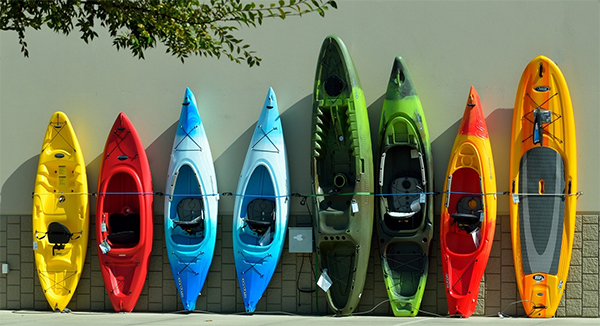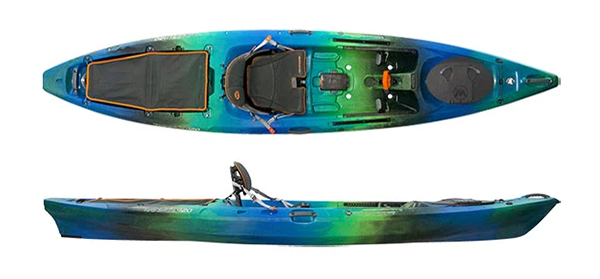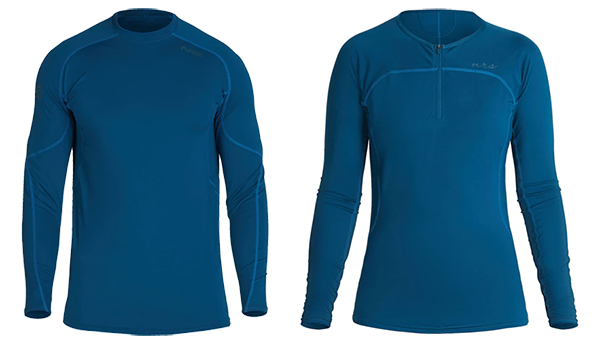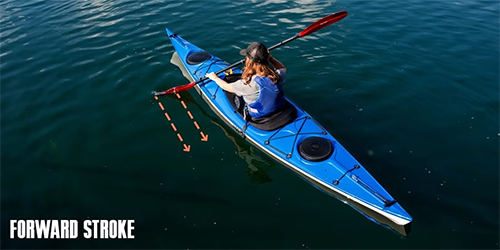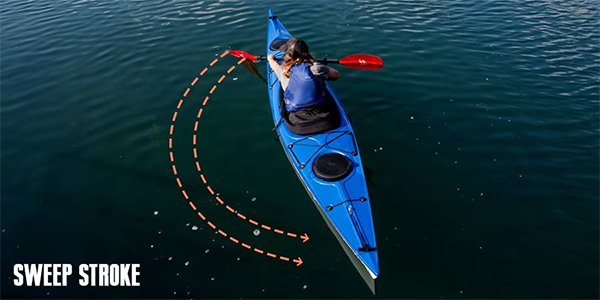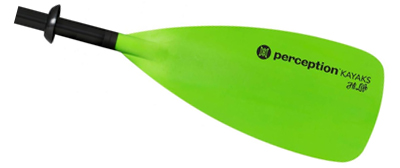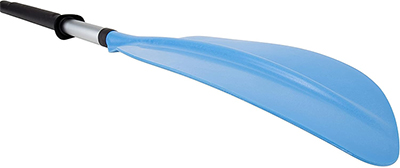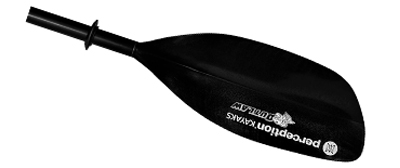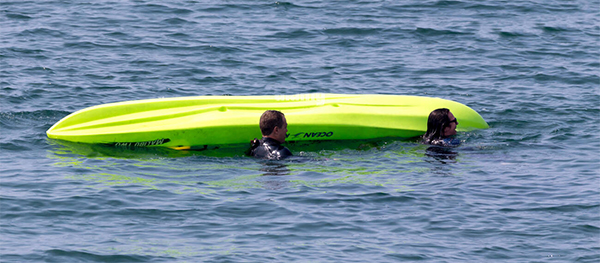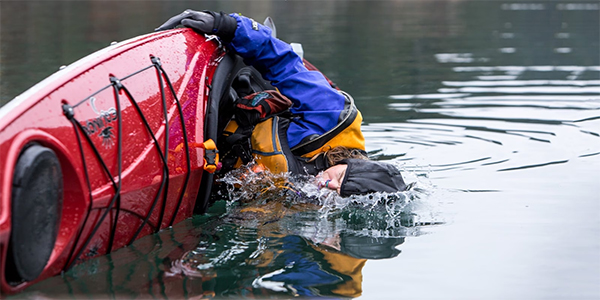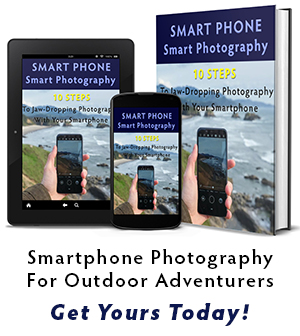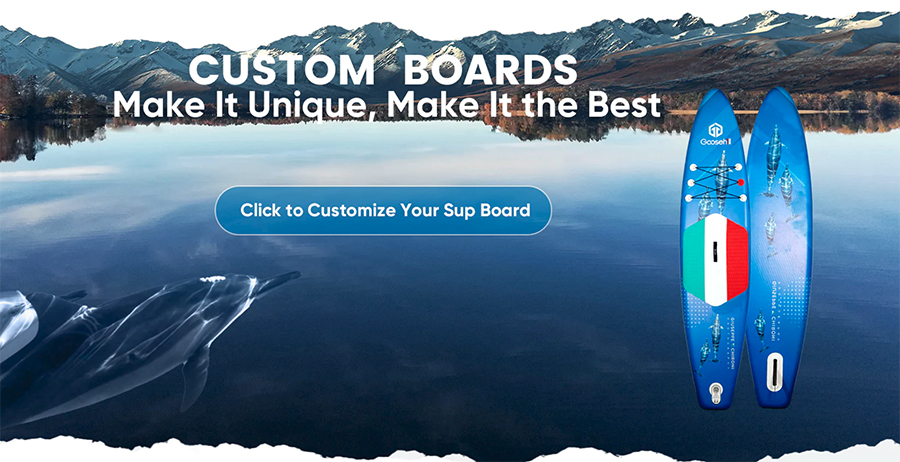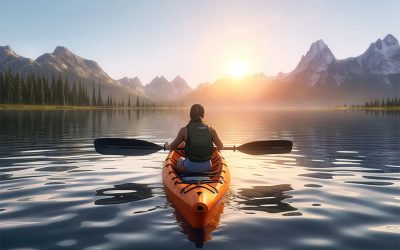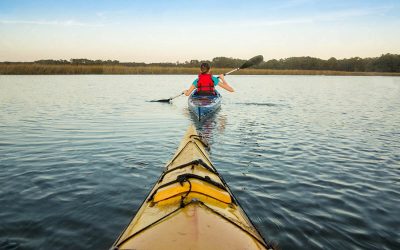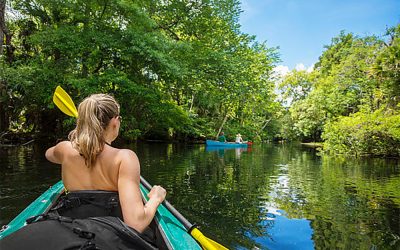Kayaking For Beginners: Your Ultimate Guide To Getting Started
Welcome to the exciting world of kayaking!
Whether you’re seeking a thrilling adventure or a peaceful escape into nature, kayaking offers an incredible experience for beginners. As a novice kayaker, it’s important to feel confident and prepared before embarking on your first voyage.
Kayaking is not only a thrilling outdoor activity but also offers numerous benefits for your health, fitness, and the opportunity to connect with nature.
In this kayaking for beginners step-by-step guide, we will explore everything you need to know to get started in the world of kayaking.
You can also check out the 8 best inflatable standup paddleboard locations in Florida. These are also great locations for kayaking.
Safety should always be your top priority when venturing out onto the water.
So whether you’re seeking an adrenaline rush or simply want to enjoy some quiet time surrounded by nature’s beauty, kayaking is an ideal activity for beginners looking to embark on their first adventure on the water.
This site uses affiliate links which may earn a commission at no additional cost to you
Kayaking For Beginners: What You'll Learn
The aim of this article is to provide beginners with a comprehensive guide on choosing the right kayak, essential gear, paddling techniques, and safety tips for an enjoyable and safe kayaking experience.
By following these guidelines—choosing the right kayak, models; having essential gear, learning basic paddling techniques, and prioritizing safety—you’ll be well-prepared to embark on your kayaking journey.
Remember to have fun, explore beginner-friendly destinations, and make unforgettable memories while respecting the natural environment around you.
What Is The Importance Of Choosing The Right Kayak
Choosing the perfect kayak is an exciting part of starting your kayaking journey. With a wide range of options available, it’s important to consider a few key factors to ensure you select the right one for you. First and foremost, think about the type of kayaking you plan to do.
Are you interested in calm lake paddling or more adventurous whitewater rapids? Understanding the different types of kayaks and their intended uses will help narrow down your choices.
For beginners, it’s generally recommended to start with a recreational kayak. These kayaks are stable, easy to maneuver, and perfect for calm water environments like lakes and slow-moving rivers.
They often have a comfortable seat with backrest support, making them ideal for longer trips. Additionally, recreational kayaks tend to be wider, providing greater stability for those new to paddling.
Next, consider the size and weight capacity of the kayak. It’s essential to choose a kayak that can accommodate your body comfortably while also allowing for some additional space if you plan on bringing gear along with you.
Look for models equipped with grab handles on both ends for easy transport and launching into the water. Some kayaks also come with built-in flotation devices or bulkheads that help keep them buoyant even if they capsize.
What Are The Different Types Of Kayaks
The world of kayaking offers a variety of vessels to suit any paddling style and adventure. Choosing the right kayak can make your experience smooth sailing (or paddling!), so let’s dive into the most common types:
By Design:
1. Sit-Inside Kayaks (SIK): These classic kayaks feature a closed cockpit that you sit inside, offering protection from the elements and splashes. They come in various lengths and styles, including:
- Touring Kayaks: Long and narrow for efficient paddling on lakes, rivers, and coastal waters. They have ample storage for multi-day trips.
- Sea Kayaks: Designed for open water with features like bulkheads for buoyancy and cockpits that fit spray skirts to keep you dry.
- Whitewater Kayaks: Short and maneuverable for navigating rapids and rough currents. They have rockered hulls for stability and buoyancy.
- Recreational Kayaks: Stable and wide for leisurely paddling on calm waters. They’re perfect for beginners and families.
2. Sit-On-Top Kayaks (SOT): As the name suggests, you sit on top of these kayaks with an open deck. They’re known for their:
- Stability: Wider than SIKs, making them great for beginners and those who value balance.
- Accessibility: Easy to get in and out of, ideal for fishing or swimming.
- Comfort: Often have molded seats and legroom for relaxed paddling.
By Material:
Rigid Kayaks: Made from polyethylene, fiberglass, or composite materials, offering durability and performance.
Inflatable Kayaks: Made from polyethylene, fiberglass, or composite materials, offering durability and performance.
Folding Kayaks: Made from polyethylene, fiberglass, or composite materials, offering durability and performance.
Choosing the Right Kayak: Stability, Size & Weight, Material
Picking the perfect kayak is an exciting step towards paddling adventures! But with so many options, it can be overwhelming.
Here we’ll take a look at key considerations: stability, size & weight, and material.
Stability:
Your kayak’s stability is paramount, especially for beginners. It dictates how much wobble you’ll experience and how likely you are to capsize. Here’s a breakdown of stability types:
- Sit-inside kayaks: These offer the most enclosed cockpit, ideal for rougher waters or colder climates. They tend to be more stable than sit-on-top kayaks, but re-entry after a capsize can be trickier.
- Sit-on-top kayaks: These kayaks have an open cockpit, making them great for warmer weather and easier re-entry. However, they tend to be less stable than sit-inside kayaks, especially in choppy conditions.
- Tandem kayaks: These kayaks are designed for two paddlers, making them perfect for family outings or social paddles. They offer good stability but can be less maneuverable than single kayaks.
Size & Weight:
Choosing the right size and weight kayak depends on your body size, paddling experience, and intended use:
- Length: Longer kayaks (12ft+) offer better tracking and glide in open water, while shorter kayaks (8-10ft) are more maneuverable in tight spaces.
- Width: Wider kayaks (30″+) are more stable but less efficient, while narrower kayaks (22-28″) are faster but less tippy.
- Weight: Lighter kayaks (30-40lbs) are easier to transport and launch, while heavier kayaks (50+lbs) offer more stability and capacity.
Material:
Kayak materials affect performance, durability, and price:
- Plastic: The most common and affordable material, plastic kayaks are durable and easy to maintain, but can be heavy and less responsive.
- Rotomolded plastic: A higher-quality plastic that is lighter and more rigid than standard plastic, offering good performance and durability at a moderate price.
- Composite: Made from fiberglass or Kevlar, composite kayaks are lightweight, responsive, and durable, but they are also the most expensive option.
- Inflatable kayaks: These kayaks are portable and easy to store, but they are less durable and perform worse than hardshell kayaks.
What Is Essential Gear For Beginning Kayaking
When it comes to kayaking, having the right gear is essential for a safe and enjoyable experience on the water. As a beginner, it’s important to invest in gear that will support your learning journey and provide you with the necessary tools to navigate the waters with confidence.
Let’s take a closer look at some of the essential gear you should consider.
As you gain more experience and venture into different kayaking environments, there may be additional gear that becomes necessary.
Here Is The Essential Kayaking Gear For Beginners
1. PFD (Personal Flotation Device): A PFD is a must-have for all kayakers, regardless of their skill level. This device is designed to keep you buoyant in case of an accident or capsize. Make sure to choose a PFD that fits properly and is approved by relevant safety regulations.
2. Paddle: Your paddle is like an extension of your arms when you’re out on the water.
Look for a lightweight paddle with adjustable length so that you can customize it according to your height and paddling style
3. Seat Pad: While most kayaks come with built-in seats, they may not always provide the level of comfort you desire, especially during longer trips. A seat cushion can add an extra layer of padding and support, making your time in the kayak much more enjoyable.
Look for cushions specifically designed for kayaks with features like non-slip bottoms and adjustable straps for easy installation.
4. First Aid Kit: Accidents happen, even to the most cautious paddlers. From minor cuts and scrapes from sunburns and insect bites to sprains and strains from awkward maneuvers, a basic kit equips you to handle these situations efficiently and effectively.
Knowing you have the tools to address minor injuries fosters a sense of security and self-reliance. This confidence allows you to explore further, push your limits, and truly relish your time on the water.
Here Is The Essential Clothing For Kayaking
Choosing the right clothing for kayaking is crucial for a comfortable and safe experience. It’s all about staying warm, dry, and protected from the elements while also allowing for freedom of movement. Here’s a breakdown of what to wear for different kayaking conditions:
Layering is key! This allows you to adjust to changing temperatures and activity levels. Avoid cotton, as it absorbs water and stays wet, instead opting for quick-drying synthetic fabrics like polyester or nylon.
Base layer:
- Warm weather: A rash guard or quick-drying synthetic shirt and shorts/swimsuit will keep you comfortable and protected from the sun.
- Cold weather: A thin merino wool or synthetic base layer will wick away moisture and keep you warm.
Mid layer (optional):
- Cool weather: A fleece or synthetic jacket adds an extra layer of warmth without restricting movement.
- Cold weather: A thicker fleece or down jacket may be necessary depending on the temperature.
Outer layer:
- Rainy/windy conditions: A waterproof and breathable jacket and pants are essential to keep you dry and comfortable. Look for features like adjustable cuffs and hoods, and seams that are taped to prevent water from seeping in.
- Sunny conditions: A sun-protective shirt and hat are important to shield you from harmful UV rays. A lightweight windbreaker can also be useful in case of sudden gusts.
Footwear:
- Warm weather: Quick-drying water shoes or sandals are comfortable and provide good grip on wet surfaces.
- Cold weather: Neoprene booties or socks will keep your feet warm in colder water.
What Are The Basic Kayaking Technique?
Mastering the five basic kayak paddling strokes is paramount for beginner paddlers, as they form the foundation of efficient and controlled maneuvering on the water.
The forward stroke is fundamental, propelling the kayak smoothly through calm waters and ensuring effective travel.
In contrast, the backward stroke facilitates quick stops and reversals, offering crucial control in dynamic environments.
Turning strokes, like the sweep and draw, enable precise changes in direction, essential for navigating around obstacles or exploring winding waterways.
How To Hold A Kayak Paddle Properly
Holding a kayak paddle properly is essential for efficient and comfortable paddling, as well as reducing the risk of injury. Here are key considerations for holding a kayak paddle:
1. Grip Placement: Hold the paddle with both hands, keeping them shoulder-width apart. Your grip should be relaxed, with your knuckles facing forward
2. Feathering: Feathering refers to the angle of the blades relative to each other. Some paddles allow you to adjust the feathering angle. Beginners often start with zero or low feathering, where the blades are in line with each other.
3. Blade Orientation: Ensure that the concave side of the paddle blade is facing you. This helps in creating a more effective stroke.
4. Paddle Distance: Hold the paddle the proper distance from your body - around 12 inches.
The 4 Essential Kayak Paddle Strokes
Mastering these five basic kayak paddling strokes will set you well on your way to navigating the water with confidence and ease. Here’s a breakdown of each stroke:
1. Forward Stroke:
- Function: Propels your kayak forward in a straight line.
- Technique:
- Dip the paddle blade on one side of the kayak near your hip, with the blade perpendicular to the water.
- Engage your core and torso to pull the blade back in a smooth arc, keeping your arm close to your body.
- As the blade passes your hip, rotate your wrist to feather (angle) the blade slightly, minimizing wind resistance.
- Push the blade out of the water near your other hip and repeat on the other side.
2. Reverse Stroke:
- Function: Slows down or stops your kayak, or moves backward in a controlled manner.
- Technique:
- Similar to the forward stroke, but in reverse.
- Dip the paddle blade near your hip with the blade facing the stern of the kayak.
- Pull the blade towards your body, keeping your arm close.
- Feather the blade as it passes your hip and push it out of the water near your other hip.
3. Draw Stroke:
- Function: Turns your kayak towards the side you’re paddling on.
- Technique:
- Dip the paddle blade deeply into the water further away from your kayak, with the blade parallel to the kayak.
- Pull the blade towards your body in a controlled J-shaped motion, bringing the tip of the blade closer to the kayak.
- Feather the blade and exit the water near your hip.
4. Sweep Stroke:
- Function: Initiates a turn away from the side you’re paddling on.
- Technique:
- Similar to the draw stroke, but dip the paddle blade closer to your kayak.
- Push the blade away from your body in a sweeping motion, keeping your arm extended.
- Feather the blade and exit the water near your hip.
Paddle Perfection: Understanding Kayak Paddle Blades
Choosing the right kayak paddle is like finding the perfect dance partner - it complements your style and enhances every move.
With so many types of paddles out there, it can be tough to know where to begin. But fear not, fellow paddler! This guide will steer you through the most common types of kayak paddles, highlighting their strengths and ideal situations.
Paddle Length:
Before diving into blade shapes, let’s address length. Your ideal paddle length depends on your height, torso length, and kayak width. Generally, a paddle should be about 6-10 inches taller than you. Taller paddlers and wider kayaks need longer paddles for efficient strokes.
Blade Shapes:
-
Symmetrical Blades: These blades have identical shapes on both sides, making them versatile for various paddling styles and conditions. They’re a great choice for beginners and all-around paddling.
Asymmetrical Blades: These blades have a larger, more powerful face on one side and a smaller, stabilizing face on the other. They offer more power and forward bite, making them ideal for touring, fitness paddling, and rougher waters.
Wing Blades: These blades have a wide, angled design that catches more water with each stroke, providing maximum power and speed. However, they require more technique and can be tiring for long distances. Best for experienced paddlers in calm conditions.
Feathering:
Many paddles allow you to adjust the “feathering” angle, which means offsetting the blades slightly. This reduces wind resistance on the out-of-water blade during recovery, making your strokes more efficient. Feathering angles typically range from 0° (blades aligned) to 60° (blades significantly offset).
Materials:
Paddle shafts and blades come in various materials:
- Aluminum: Affordable but heavier, good for casual paddling.
- Fiberglass: Lighter and stiffer than aluminum, offering good performance and value.
- Carbon Fiber: The lightest and stiffest option, ideal for serious paddlers seeking maximum performance, but also the most expensive.
Matching Paddle to Situation:
Now, let’s match paddles to situations:
- Calm waters & leisurely paddling: Choose a shorter, symmetrical paddle with a relaxed feathering angle.
- Touring & fitness paddling: Opt for a slightly longer, asymmetrical paddle with a moderate feathering angle for efficient power.
- Rough water & surfing: Go for a longer, asymmetrical paddle with a high feathering angle for stability and control.
- Racing & speed: Choose the lightest wing paddle you can handle with a high feathering angle for maximum power and efficiency.
Remember: The best paddle is the one that feels comfortable and suits your paddling style and goals. Don’t hesitate to try different paddles before making a decision. Happy paddling!
Paddling with Peace of Mind: Safety Essentials for Beginner Kayakers
Kayaking opens doors to serene waterways and exhilarating adventures, but for beginners, safety must be the anchor of every paddle stroke. While the allure of gliding across the water is strong, underestimating risks can turn a peaceful escapade into a perilous situation. Here’s why prioritizing safety is paramount for rookie kayakers:
1. Life is a Buoyant Jacket: Wearing a properly fitted Personal Flotation Device (PFD) is not optional, it’s non-negotiable. Even strong swimmers can be disoriented by a capsize, and a PFD keeps you afloat, buying precious time for help to arrive.
2. Buddy Up or Bust: Solitude has its charm, but venturing out solo as a beginner carries unnecessary risks. Paddle with a buddy who can assist in case of emergencies, ensuring someone’s got your back (and paddle) every stroke of the way.
3. Know Your Limits: Don’t mistake enthusiasm for expertise. Start on calm, familiar waters, gradually building your skills and confidence before tackling rougher currents or longer distances. Respect your physical limitations and don’t push your boundaries beyond your current paddling prowess.
4. Weather the Storm: Check the forecast religiously! Wind, rain, and sudden storms can transform a gentle paddle into a perilous journey. Choose your paddling days wisely, avoiding adverse weather conditions that could overwhelm your beginner skills.
5. Gear Up for the Unexpected: Pack for unpredictable situations. Sun protection, a dry bag for essentials, a whistle to signal for help, and a basic first-aid kit are your allies in unforeseen circumstances.
6. Befriend the Waterway: Research the waterway before setting off. Know water depths, currents, potential hazards like underwater obstacles, and local regulations. Familiarity breeds confidence and keeps you prepared for the aquatic landscape.
7. Practice Makes Perfect: Before venturing out, learn basic safety skills like wet exits, self-rescue techniques, and capsize drills in a controlled environment. Confidence in your abilities builds resilience and reduces panic in unexpected situations.
Remember, the key to enjoying kayaking’s magic is a healthy dose of respect for the water’s power. By prioritizing safety, you can transform every paddle stroke into a confident leap towards unforgettable aquatic adventures. Now, grab your PFD, buddy up, and get ready to explore the water world with prudence and peace of mind!
Decoding the Water: A Beginner's Guide to Understanding Kayaking Conditions
For any paddler, especially beginners, understanding water conditions is like speaking the language of the river, lake, or ocean. It’s the key to a safe, enjoyable, and ultimately empowering kayaking experience. So, grab your metaphorical paddles and let’s dive into the essentials!
1. Currents and Calm: Imagine water as a highway. Gentle currents, like the slow, steady flow of a wide river, are like well-marked lanes, guiding your kayak with minimal effort. But beware of rapids or swirling eddies, the unruly intersections that can send your boat spinning.
2. Wind Whispers: The wind, a fickle friend, can be your silent tailwind or a boisterous opponent. A light breeze can add a playful ripple to your journey, while strong gusts can whip up waves that challenge your balance. Always check the wind forecast and choose sheltered areas if you’re a beginner. Remember, paddling against the wind takes more energy, so plan your route accordingly.
3. Wave Language: Waves, the playful ripples or the towering titans of the ocean, deserve respect. Small waves add a fun bounce to your ride, while large ones can capsize an unprepared paddler. Learn to read wave patterns, anticipate their movements, and practice bracing techniques to maintain stability.
4. Weather Wisdom: Mother Nature’s moods can change faster than a kayaker’s stroke. Sun-drenched mornings can give way to sudden storms, and calm waters can turn choppy with rising tides. Always check the weather forecast before setting off and be prepared to adjust your plans if conditions worsen.
Beyond the Paddle: Why Float Plans Are A Lifeline for Beginner Kayakers
For any kayaker, especially beginners, venturing onto the water is an exhilarating dance with adventure. But before setting off on that solo adventure, there’s one safety measure as crucial as your paddle and PFD: a float plan. It’s not just a formality; it’s a lifeline.
Think of a float plan as a detailed pre-departure itinerary shared with someone onshore. It’s like leaving a breadcrumb trail through the water, ensuring someone knows where you are, with whom, and when you expect to be back.
Here’s why it’s essential for beginner kayakers:
1. The Early Bird Catches Help: Emergencies don’t announce themselves like unwelcome guests. Sudden weather changes, equipment failures, or even minor injuries can quickly escalate in an unfamiliar watery environment. A float plan informs your backup on land immediately, saving precious time in coordinating search and rescue efforts.
2. Peace of Mind Paddles with You: Worry is a heavy anchor on any journey. Leaving a detailed plan with a trusted contact eases both your anxiety and theirs. They can rest assured knowing your intended route, estimated turnaround time, and emergency contact information. This allows you to focus on enjoying the paddle, not fretting about “what ifs.“
3. Precision Guides Rescue Efforts: Imagine being lost in a maze of waterways – disoriented and desperate. A precise float plan acts as a map for rescuers. Details like launch point, planned route, and even landmarks you might pass become invaluable clues, narrowing down the search area and expediting your rescue.
4. Simple Steps, Big Impact: Creating a float plan is easy! Jot down your intended route, estimated times, and emergency contact information. Share it with a trusted person before you set off, and consider leaving a copy in your car or another visible location.
Remember, a float plan is not a guarantee against mishaps, but it’s a powerful safety measure that can make all the difference in an emergency. For beginner kayakers, it’s a stepping stone towards responsible, confident paddling experiences.
When Your Kayak Flips: Capsize and Self-Recovery for Beginner Kayakers
The thrill of kayaking lies in skimming across serene waters, the sun glinting off your paddle. But for all its tranquility, the water also holds an element of unpredictability.
A sudden gust of wind, a hidden rock, or an uneven weight shift can send even the most seasoned paddler into a watery tumble. That’s where understanding kayak capsize and self-recovery comes in - essential skills for every beginner kayaker.
Facing the Flip:
Capsizing doesn’t have to be a kayaking nightmare. Staying calm and remembering these key steps can turn a potentially stressful situation into a manageable one:
1. Stay with your boat: Your kayak is your lifeline. Don’t abandon it! Grab onto a coaming (the rim around the cockpit) or paddle float if you have one.
2. Empty your lungs: Before attempting anything, exhale any air trapped in your chest. This prevents panic inhalation if you go underwater briefly.
3. Assess the situation: Is the water calm or choppy? Are there any hazards nearby? Take a quick mental snapshot of your surroundings.
Righting the Wrong:
Now for the recovery! Depending on your comfort level and the conditions, you have two main options:
1. Wet exit: This is the simplest method for calm water. Slide out of the cockpit, keeping your feet near the kayak for stability. Grab the coaming and pull yourself on top of the kayak, then re-enter.
Staying Afloat:
Once back in your kayak, the journey isn’t over. You’ll likely have some water to bail out. Use a bilge pump or a paddle scoop to clear the cockpit efficiently.
Capsizing might be a part of the kayaking experience, but with proper knowledge and skills, it doesn’t have to dampen your aquatic adventures.
So, grab your paddle, practice your recovery roll, and embrace the thrill of navigating the waterways, knowing you’re equipped to handle whatever comes your way, even a flip or two!
Beyond The Shoreline: Final Thoughts On Your Beginner Kayaking Adventure!
In conclusion, embarking on a kayaking journey as a beginner can be an exhilarating experience, offering not only a fantastic recreational activity but also a chance to connect with nature. This step-by-step guide is designed to assist newcomers in navigating the waters of kayaking, from selecting the right equipment to mastering basic techniques and ensuring safety on the water.
Choosing the appropriate kayak is the foundational step, considering factors such as stability, size, and material. Equipping oneself with essential gear, including a personal flotation device, suitable paddle, and safety equipment, is crucial for a secure and enjoyable kayaking experience.
Mastering basic kayaking techniques, such as proper paddling strokes and maneuvering, sets the foundation for skill development. Safety guidelines emphasize understanding water conditions, having an emergency plan, and adhering to responsible practices on the water. Selecting the right location, building skills gradually, and staying environmentally conscious contribute to a fulfilling kayaking journey.
You can also check out the 8 best inflatable standup paddleboard locations in Florida. These are also great locations for kayaking.
Check Out Related Posts
11 Best Places To Kayak In Northern California: Coastlines To Countrysides
Embarking on a kayaking adventure along the pristine waters of Northern California offers an unparalleled experience for outdoor enthusiasts and nature lovers alike. With its diverse landscapes ranging from rugged coastlines to serene lakes and winding rivers,...
Kayaking Charleston SC: The Complete Guide To Exploring Coastal Beauty
Nestled within the heart of South Carolina, Charleston beckons adventurers and nature enthusiasts alike with its captivating allure of kayaking. Offering a serene escape from the bustling city life, kayaking Charleston SC unveils a tapestry of rich ecosystems, diverse...
Kayaking Sarasota: The Ultimate Guide To Exploring Paradise
Sarasota, Florida, is renowned for its stunning coastline, intricate waterways, and diverse ecosystem, making it a haven for outdoor enthusiasts, especially kayakers. With its calm bays, mangrove tunnels, and picturesque estuaries, kayaking Sarasota offers an ideal...

